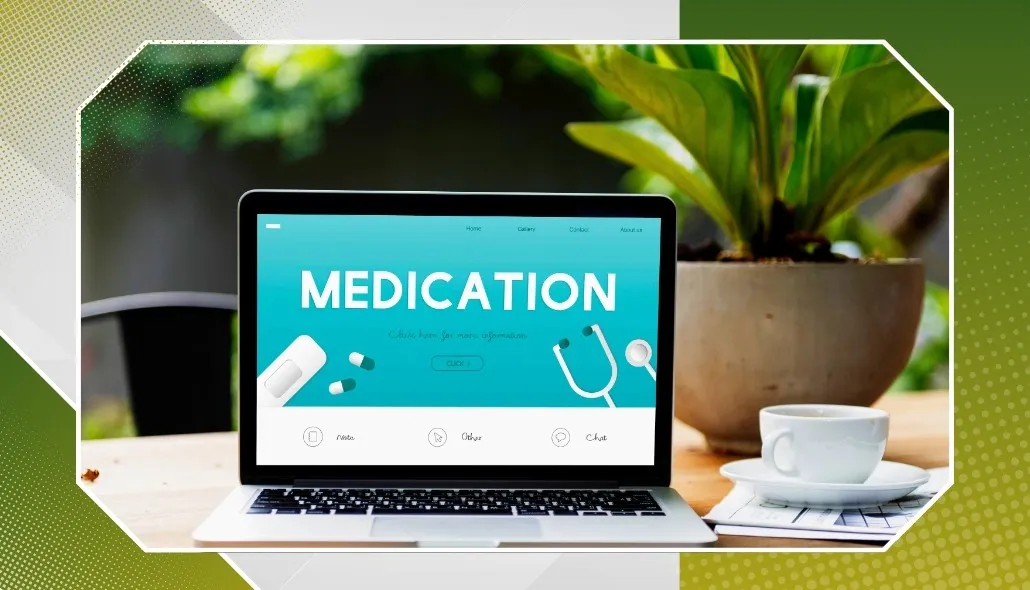Your pharmacy website serves as a digital storefront, often creating the first impression for interested customers. A well-optimised mobile site can drive foot traffic to your physical location, build trust with prospective patients, increase rankings in local search results, and enhance accessibility for on-the-go customers.
This blog provides practical tips for optimising your pharmacy’s website for mobile devices, helping you stand out in NYC’s competitive healthcare market. From responsive design to local SEO strategies, you’ll discover proven techniques for strengthening your digital presence and attracting more customers to your pharmacy.
Why Mobile Optimisation Matters for NYC Pharmacies
Mobile optimisation is crucial for NYC pharmacies in 2024. With 87% of New Yorkers using smartphones to search for local healthcare services, having a mobile-friendly website directly impacts your pharmacy’s success.
Create a Seamless User Experience
A well-optimised mobile site creates a seamless user experience by:
- Loading pages in under 3 seconds
- Displaying clear, readable text
- Offering easy navigation
- Providing quick access to essential services
Boost Your Search Engine Rankings
Your pharmacy’s search engine rankings benefit from mobile optimisation. Google prioritises mobile-friendly websites in local search results, placing your pharmacy higher when NYC residents search for:
- “Pharmacy near me”
- “24-hour drugstore”
- “Prescription refill services”
Gain a Competitive Advantage
This optimisation creates a competitive advantage in NYC’s dense healthcare market. Local pharmacies with mobile-friendly websites capture 62% more digital traffic than non-optimised competitors. Your enhanced visibility helps attract customers who might otherwise turn to large chain pharmacies.
Improve Your Local Search Performance
Mobile optimisation also impacts your local search performance. When NYC residents search for pharmacies within specific neighbourhoods, Google’s algorithm favours websites that deliver excellent mobile experiences.
Top Tips for Creating a Mobile-Friendly Website
Creating a mobile-friendly website requires strategic planning and implementation of key design elements. These essential tips help NYC pharmacies build effective, user-friendly mobile websites that serve their customers’ needs.
Implement Responsive Web Design
Responsive web design is the core of a mobile-friendly website. This approach enables your pharmacy’s website to automatically adjust its layout based on the visitor’s screen size and device type. Your website maintains its practicality and visual appeal, whether accessed on smartphones, tablets, or desktop computers.
Key elements of responsive web design include:
- Fluid Grid Layouts: Content automatically resizes and reorganises based on screen dimensions
- Flexible Images: Pictures scale proportionally to fit different screen sizes
- CSS Media Queries: Custom styling rules apply based on device characteristics
A responsive design implementation includes:
- Screen Size Detection: Automatic recognition of device screen dimensions
- Content Prioritisation: Strategic arrangement of essential information for mobile users
- Touch-Friendly Elements: Properly sized buttons and interactive components
- Scalable Typography: Text that remains readable across devices
The benefits of responsive design continue beyond user experience:
- Reduced maintenance costs – one website works across all devices
- Improved SEO performance through consolidated URL structure
- Better analytics tracking with unified reporting
- Faster loading times through optimised code structure
Your pharmacy’s website must seamlessly adapt to various screen sizes while maintaining functionality and visual appeal. This adaptability ensures customers can access important information such as prescription refills, store hours, and healthcare services regardless of their chosen device.
Simplify Navigation for Easy Access to Information
A streamlined navigation structure is the backbone of your pharmacy’s mobile website. You need a transparent, intuitive menu system that guides users directly to essential information:
- Create a prominent search bar at the top of your mobile site
- Limit main menu items to 5-7 key categories
- Use descriptive labels like “Prescriptions,” “Services,” and “Contact.”
- Place critical information (store hours, location, phone number) in a sticky header
Your mobile navigation should prioritise everyday user tasks:
Quick-Access Features
- One-tap prescription refills
- Instant directions to your pharmacy
- Direct call buttons
- Emergency contact information
A hamburger menu (☰) conserves valuable screen space while keeping all navigation options accessible. This clean approach helps NYC residents quickly find pharmacy services during urgent situations or late-night medication needs.
Optimise Website Speed for Better User Retention
Website speed directly impacts your pharmacy’s success in the digital space. A one-second variation in page load time can result in a 7% dip in conversions. NYC pharmacy customers expect quick access to essential health information and services.
Key Speed Optimisation Strategies:
- Compress and optimise images without sacrificing quality
- Minimise HTTP requests by combining CSS and JavaScript files
- Enable browser caching for returning visitors
- Use a Content Delivery Network (CDN) for rapid content distribution
- Remove unnecessary plugins and scripts
Google’s PageSpeed Insights tool helps identify specific areas for improvement. Aim for a mobile load time of under 3 seconds to maintain user engagement and reduce bounce rates. Fast-loading pages create positive user experiences, increasing trust in your pharmacy’s digital presence.
Regular speed testing across different mobile devices ensures consistent performance for your NYC customers searching for medication information or scheduling appointments.
Ensure Readable Text with Appropriate Font Sizes and Styles
Text readability directly impacts user engagement on mobile devices. Your pharmacy website needs fonts sized between 16 and 18 pixels for body text and 24 to 32 pixels for headlines. Sans-serif fonts like Arial, Helvetica, or Open Sans work best on small screens.
Key Readability Practices:
- Set line spacing to 1.5 times the font size
- Ensure great contrast between text and background colours
- Break text into short paragraphs of 2-3 sentences
- Use left-aligned text for natural reading flow
The mobile viewport should display 30-40 characters per line for optimal readability. You can test your font choices using Google’s Mobile-Friendly Test tool to ensure text remains clear across different screen sizes.
Recommended Font Pairings:
- Roboto + Open Sans
- Montserrat + Source Sans Pro
- Lato + PT Sans
Design Touch-Friendly Elements for Seamless Interaction
Creating touch-friendly elements ensures your pharmacy website visitors can interact effortlessly with your content on their mobile devices. Here’s what you need to implement:
- Set button sizes to a minimum of 44×44 pixels for optimal tapping
- Space clickable elements at least 8 pixels apart to prevent accidental taps
- Make form fields large enough for easy data entry
- Create prominent call-to-action buttons that stand out visually
Your pharmacy website’s interactive elements need distinct visual feedback:
- Colour changes on tap/touch
- Subtle animations for button presses
- Precise hover states for touchscreen interactions
- Visual indicators for active states
These design considerations help your customers:
- Refill prescriptions without frustration
- Access health information quickly
- Schedule consultations seamlessly
- Navigate your pharmacy services with confidence
Remember to test all interactive elements across different mobile devices to ensure consistent functionality and user experience.
SEO Strategies for Optimising Mobile-Friendly Websites
SEO drives organic traffic to your pharmacy’s mobile website by making it visible to potential customers searching for healthcare services in NYC. A strategic SEO approach helps your pharmacy appear in local search results when users need medical supplies or prescription services.
Essential SEO Elements for Pharmacy Websites:
- Target location-specific keywords like “24-hour pharmacy Manhattan” or “prescription delivery Upper East Side.”
- Include service-specific terms such as “flu shots,” “medication counselling,” or “compounding service.”
- Optimise meta descriptions and title tags with your primary keywords
- Create unique URLs for each service page using descriptive keywords
Content Strategy for Maximum Impact:
Your pharmacy website needs high-quality content that answers common customer questions:
- Write detailed service descriptions
- Create blog posts about health topics
- Develop FAQ pages addressing medication queries
- Share expert advice on common health conditions
Technical SEO Considerations:
- Implement schema markup for pharmacy-specific information
- Optimise image alt text with relevant keywords
- Ensure proper heading structure (H1, H2, H3)
- Create XML sitemaps for search engine crawling
Remember to track your SEO performance through analytics tools. Monitor key metrics like organic traffic, bounce, and conversion rates to tune your strategy based on user behaviour.
Local SEO Optimisation Techniques
Local SEO requires specific strategies for NYC pharmacies to stand out in neighbourhood searches. Your Google My Business profile acts as a digital storefront – keep it updated with accurate hours, services, and contact details.
Essential Local SEO Elements:
- Create location-specific pages for each pharmacy branch
- Add neighbourhood-specific keywords in meta descriptions
- Include “near me” search terms in your content
- Maintain consistent NAP (Name, Address, Phone) across all platforms
Review Management Strategy:
- Encourage satisfied customers to leave Google reviews
- Respond promptly to all customer feedback
- Share positive reviews on your mobile site
- Include photos of your pharmacy’s exterior and interior
Building citations on local NYC directories strengthens your pharmacy’s digital presence. Focus on healthcare-specific platforms like Healthgrades and RxList alongside general business directories.
Remember to optimise your mobile site’s loading speed for local searches. Mobile users often search while on the move, making quick access to your pharmacy’s information crucial for capturing potential customers.
Conclusion
Mobile optimisation is a game-changer for NYC pharmacies looking to succeed in the digital age. These Top Mobile-Friendly Website Tips provide a strong foundation for your pharmacy’s online success. From responsive design to local SEO strategies, every aspect works harmoniously to create a more effective digital presence.
The competitive NYC pharmacy market requires excellence in digital accessibility. Your customers expect smooth mobile experiences – make sure to deliver them. Take action now to implement these proven strategies and watch your pharmacy’s online visibility grow.
Want to improve your pharmacy’s mobile presence? Contact Us at Rankingeek Marketing Agency for expert SEO services tailored to USA pharmacies. Let’s collaborate to enhance your digital footprint and reach more customers in your local area.




